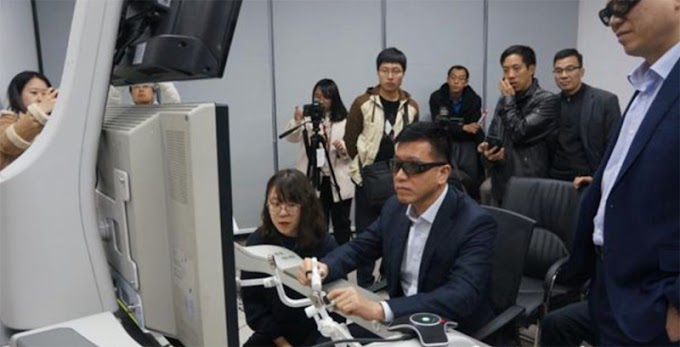When every Indian boycotting Chinese products, my younger brother
asked me a very simple question, Why India Have to depend on foreign technology? Probably, everyone
knows it, but while giving him an answer, I realized there may be many people
who might have a similar question. Then I decided to research a bit. When my
small research work was done, I gave him the answer which includes the
following. But I find every fact is equally essential for the totality of the
whole matter, thus the text became a bit lengthy, that’s why it has been
divided into several paragraphs for the sake of readability.
Background:
If we need something and which is not available in our house, we
simply go to the market to get it in exchange for money. In our country, the
scenario is similar. We have a huge demand in the field of technology as India
is one of the countries which has been considered ‘developing market economy’.
In case you don’t know, in FY2019-20 India's international business is as
follows:
 |
| Pic: percentage of imports, Ministry of commerce data |
The contribution of the electronic industry to GDP, for example, 15.5%
to GDP in Taiwan, 15.1% in South Korea, and 12.7% in China. All the
above-mentioned countries do have a very good share of electronic goods export
in GDP and are known to be the best countries for the production of electronic
goods, especially semiconductor devices, printed circuit boards,
telecommunication equipment. But in India, on an average, this proportion
is only 1.7% in the previous years
But isn’t a bit strange that India can communicate with a satellite rotating
around Moon and mars but India can’t manufacture equipment for cellular
communication? Not only that, but India is also one of the countries which have
very good antenna systems developed for various kinds of RADARs which are used
for surveillance and astronomical studies. With these examples, it is
understandable that India is capable of making equipment for telecommunication
as well as health care.
 |
Analysis of the
situation:
Now, let’s one by one tries to analyze different aspects of science and
Technology (S&T) implementation in India.
1.
With more than 300 universities India
produces 4,50,000 S&T personal per annum. The maximum of the universities
doesn’t have a world-class facility required for research & development
work. However, DST has several funds like ‘FIST’ that allows Indian
universities to develop their infrastructure through several boards like
‘SERB’. But due to the frequent change in administration & financial
policies, sometimes it becomes very difficult to get proper equipment in time.
As a result, an S&T personal has to suffer much to get a world-class
facility within his reach. There is a distinct gap between the policies and
their implementation at the destined locations.
2.
The government of India (GoI) also has
adopted several schemes to bring together academic institutions &
industrial farms. Many of the Indian industries does sponsor many research
projects that are being done by students & research personals at various
universities. But, the number of such scholarships is very low as compared to
no. of S&T personals graduates per year. Academic projects at the
university level don’t advertise properly, as a result, most of the research
project doesn’t get funds to be implemented at the industry level. The number
of participation of students in ‘tech-fair’ is not up to the mark. Indian Govt.
has several policies for R&D but has very fewer policies to send the
project for industrialization. So, there exists a gap between industry &
academia.
3.
The manufacture of some of the key
products that India imports such as semiconductors, displays, and other very
capital-intensive electrical equipment may not be possible soon as
manufacturing these require large, stable sources of clean water and
electricity. They also need a high degree of policy certainty as these require
high upfront investments. The Indian industry faces much higher costs in inputs
such as electricity and much higher logistics costs than Chinese firms. Due to
the FDI and other foreign policies of the government, many foreign technology
companies have started their business here in India. This somewhat ‘solved’ the
unemployment, but created a competition for the existing solely Indian
companies who has lesser experience in the market like consumer electronics
& telecommunication.
4.
The semiconductor industry is such an industry which requires cutting edge technological development and requires a
very high upfront cost. Some govt. laboratories do allow semiconductor
fabrication on a small scale for only R&D purposes for organizations like
ISRO & DRDO. GoI has a policy for transferring technology from govt. &
autonomous labs to the industrial usage, for example, Antrix for ISRO; C-Tech
for DRDO. Antrix and C-tech are some examples of govt. of India research
organization. Other educational autonomous bodies have technology transfer
cells, for example, CSIC of IIS-Bengaluru, IRCC for IIT-Bombay, FITT for
IIT-Delhi, SRIC for IIT-Kharagpur, etc. But, proper knowledge of this facility
& the scope of these facilities is limited. Govt. involvement in this
matter should be increased and govt. should set policies in such a way, efficient, hustle
free tech transfer can happen between government & educational
labs and industry & most importantly they
should be up to the mark of world standards.
|
Conclusion:
In this short time research, I have explored some of the important
aspects of the dependability of Indian consumers upon imported goods,
especially in consumer electronics. This topic itself can take an entire year
of research to study clearly, in the small scope of gossip we can consider a
few things. That exactly what I have done here. We have seen that there is a
gap still exists between industry and academia, due to non-favorable govt.
policies (both central & state) the industry faces huge start-up issues,
there exists a psychological barrier between Indian investors. Considering all
these burdens if an industry starts a business, due to political biasing they
don’t sustain for a long time. Now, it might be clear a little bit that India
has to rely on imports for more few years until the people of India wake up and
start educating the right things to them.
References:
- National Research Council 2010. S&T Strategies of Six Countries: Implications for the United States. Washington, DC: The National Academies Press. https://doi.org/10.17226/12920.
----------------------------------------------------------------------------------------------------------------------
For site assistance, please visit here.
For contact, please visit here.
For site assistance, please visit here.
For contact, please visit here.




0 Comments
All non-spamy comments will be visible